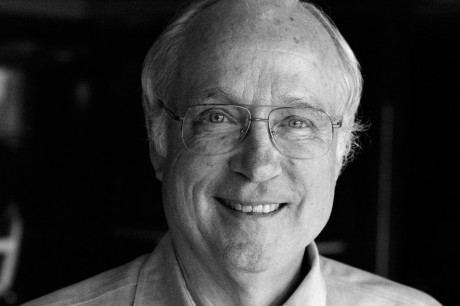Name Butler Lampson | Role Computer scientist Fields Computer Science | |
 | ||
Born December 23, 1943 (age 81) Washington, D.C. ( 1943-12-23 ) Institutions UC-BerkeleyXerox PARCDECMicrosoftMIT Notable awards Books Distributed SystemsArchitecture and Implementation: An Advanced Course Education Similar People Charles P Thacker, Alan Kay, Robert Taylor, Charles Simonyi, Gary Kildall | ||
Butler lampson personal distributed computing the alto and ethernet software
Butler W. Lampson (born December 23, 1943) is an American computer scientist contributing to the development and implementation of distributed, personal computing. He is a Technical Fellow at Microsoft and an adjunct professor at MIT.
Contents
- Butler lampson personal distributed computing the alto and ethernet software
- Personal Control of Digital Data Butler Lampson
- Biography
- Works
- Honors and awards
- Quotes
- References

Personal Control of Digital Data- Butler Lampson
Biography
After graduating from the Lawrenceville School (where in 2009 he was awarded the Aldo Leopold Award, also known as the Lawrenceville Medal, Lawrenceville's highest award to alumni), Lampson received his Bachelor's degree in Physics from Harvard University in 1964, and his Ph.D. in Electrical Engineering and Computer Science from the University of California, Berkeley in 1967.
Works
During the 1960s, Lampson and others were part of Project GENIE at UC Berkeley. In 1965, several Project GENIE members, specifically Lampson and Peter Deutsch, developed the Berkeley Timesharing System for Scientific Data Systems' SDS 940 computer.
Lampson was one of the founding members of Xerox PARC in 1970, where he worked in the Computer Science Laboratory (CSL). His now-famous vision of a personal computer was captured in the 1972 memo entitled "Why Alto?". In 1973, the Xerox Alto, with its three-button mouse and full-page-sized monitor was born. It is now considered to be the first actual personal computer (at least in terms of what has become the 'canonical' GUI mode of operation).
All the subsequent computers built at Xerox PARC followed a general blueprint called "Wildflower", written by Lampson, and this included the D-Series Machines, the "Dolphin" (used in the Xerox 1100 LISP machine), "Dandelion" (used in the Xerox 8010 model of the Xerox Star and Xerox 1108 LISP machine), "Dandetiger" (used in the Xerox 1109 LISP machine), "Dorado" (used in the Xerox 1132 LISP machine), "Daybreak" Xerox 6085, and "Dragon" (a 4-processor 6085 with one of the first snoopy caches, though never released to production).
At PARC, Lampson helped work on many other revolutionary technologies, such as laser printer design; two-phase commit protocols; Bravo, the first WYSIWYG text formatting program; and Ethernet, the first high-speed local area network (LAN). He designed several influential programming languages such as Euclid.
In the early 1980s, Lampson left Xerox PARC for Digital Equipment Corporation's Systems Research Center (SRC) In 2001, he left to work for Microsoft Research in Mountain View. That lab closed in 2014.
Lampson is an adjunct professor at MIT.
Honors and awards
Quotes
Lampson is often quoted as saying, "Any problem in computer science can be solved with another level of indirection," but in his Turing Award Lecture in 1993, Lampson himself attributes this saying to David Wheeler.
